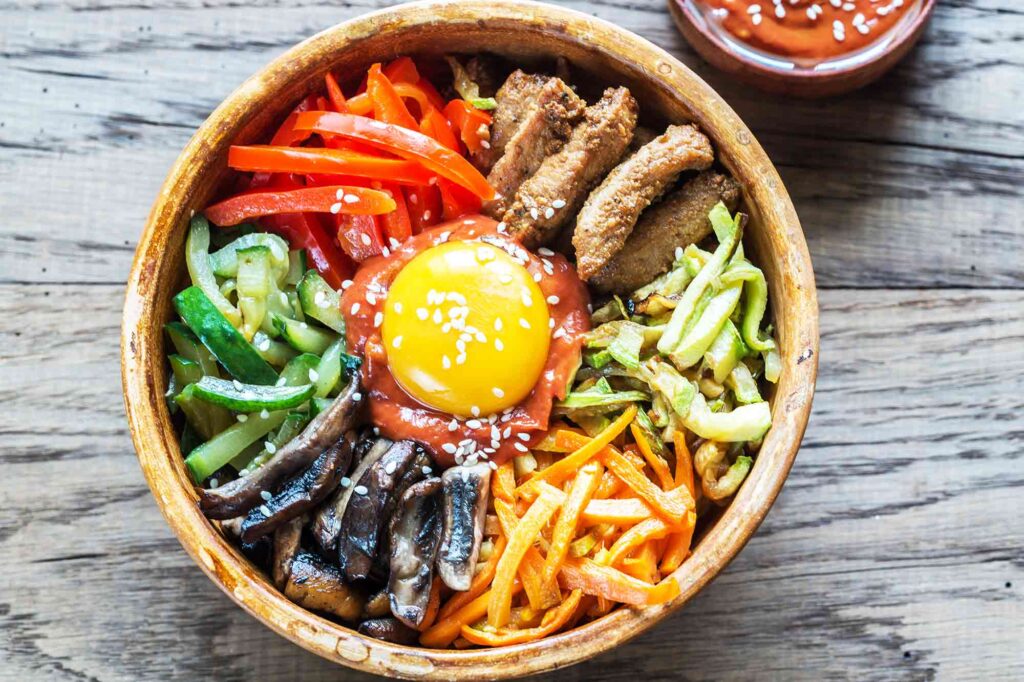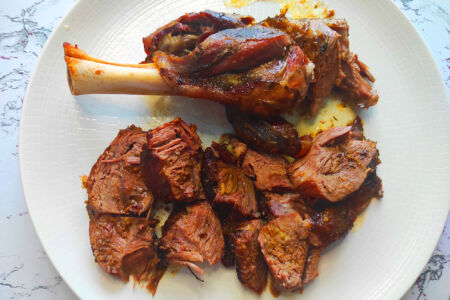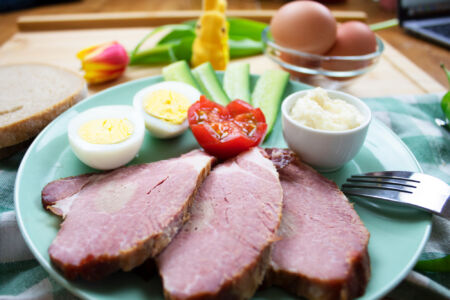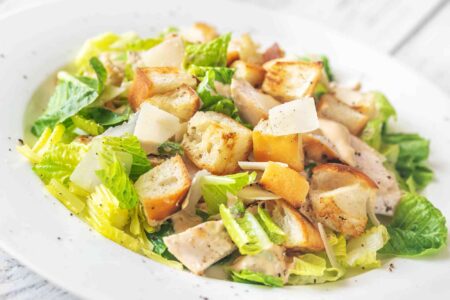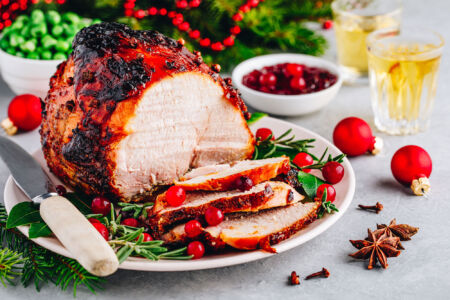Homemade Bibimbap
Discover the Delight of Bibimbap: A Korean Culinary Treasure
If you’re a fan of vibrant, flavorful dishes, bibimbap is a must-try. This Korean classic is as pleasing to the eyes as it is to the palate.
Bibimbap, which means “mixed rice,” is a bowl of warm white rice topped with sautéed and seasoned vegetables, sliced beef, a raw egg yolk, and gochujang (Korean chili paste).
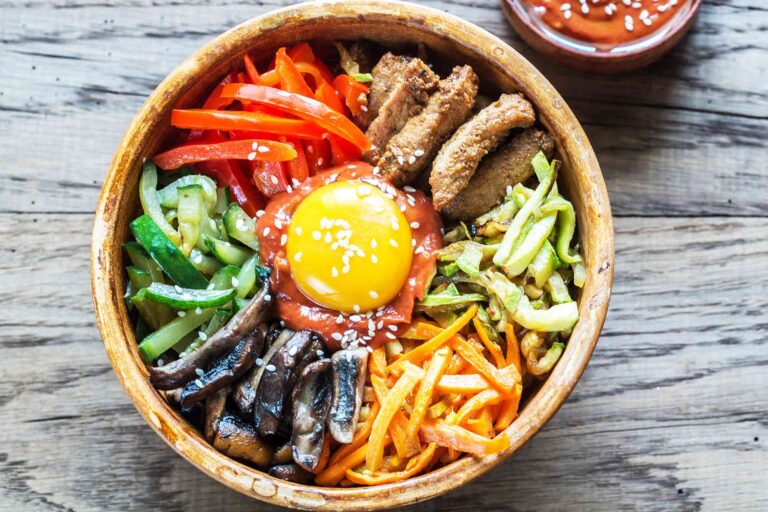
| Prep time | Cook Time | Rest Time | Total Time |
|---|---|---|---|
| 20 min | 20 min | 10 min | 50 min |
A Rainbow of Ingredients
Bibimbap is all about balance and variety. The dish typically includes a colorful array of vegetables such as carrots, zucchini, spinach, shiitake mushrooms, and bell peppers.
Each vegetable is prepared separately, often sautéed with a touch of sesame oil and a pinch of salt to bring out its unique flavor. The sliced beef is marinated in a mix of soy sauce, garlic, sugar, and sesame oil, then cooked until tender.
At the heart of bibimbap is a sunny egg yolk and a generous spoonful of gochujang. The egg yolk adds a rich, creamy texture when mixed into the hot rice, while the gochujang provides a spicy kick that ties all the flavors together.
A Glimpse into History
Bibimbap has deep roots in Korean culture. Traditionally, it was a way to use up leftover vegetables and rice. Over time, it became a beloved dish, symbolizing harmony and health.
Eating bibimbap on the eve of the Lunar New Year is a practice in many Korean households, believed to bring good fortune.
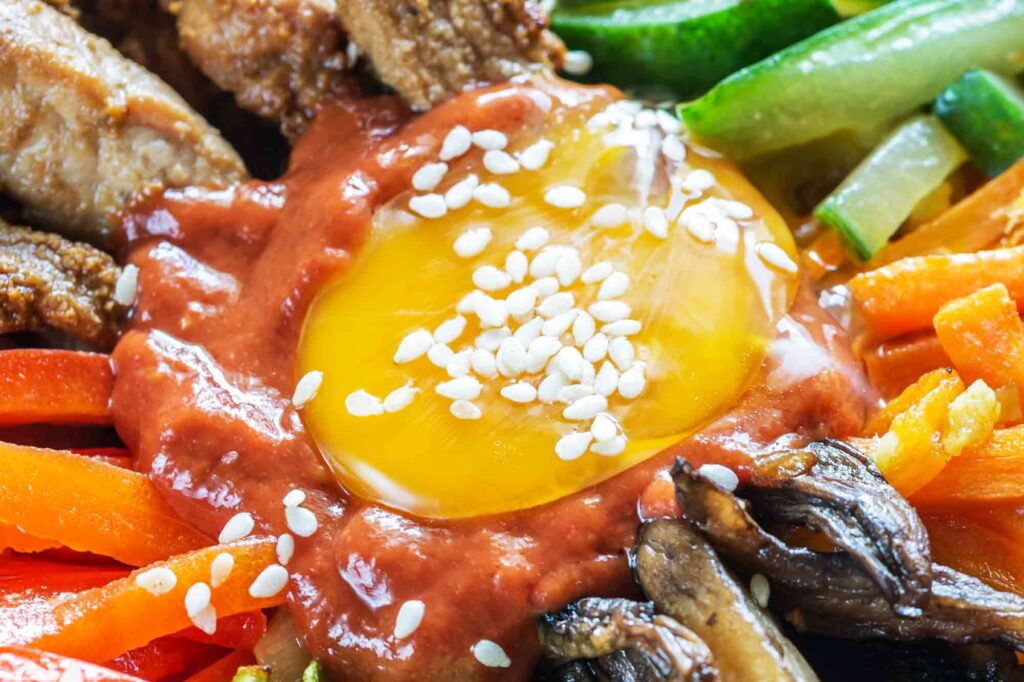
Simple, Yet Satisfying
Making bibimbap at home is straightforward and highly rewarding. It’s a versatile dish that allows you to use whatever vegetables and proteins you have on hand.
The key is to keep the components separate until it’s time to eat, then mix everything together to enjoy a symphony of flavors and textures.
Bibimbap is more than just a meal; it’s an experience. Its colorful presentation and delightful mix of flavors make it a favorite for many. Whether you’re new to Korean cuisine or a seasoned fan, bibimbap is a dish that deserves a spot on your table.
Give it a try, and you’ll understand why it’s a staple in Korean homes and restaurants alike.
Ingredients
Rice
Vegetables
Meat
Seasonings and Sauce
Instructions
Prepare the Rice
Cook the rice according to package instructions or use a rice cooker.
Prepare the Vegetables
Blanch the bean sprouts in boiling water for about 1-2 minutes.
Drain and set aside.Heat a pan over medium heat with a little vegetable oil and sauté the zucchini, carrots, shiitake mushrooms, and red bell pepper separately until they are slightly tender.
Season each vegetable with a pinch of salt.
Prepare the Beef
In a bowl, mix the sliced beef with soy sauce, sugar, minced garlic, and sesame oil.
Marinate for about 10 minutes.
Heat a pan over medium-high heat and cook the marinated beef until it’s cooked through.
Assemble the Bibimbap
In a large bowl, place the cooked rice at the bottom.
Arrange the sautéed vegetables, bean sprouts, and cooked beef on top of the rice in sections.
Place the egg yolk in the center of the bowl.
Add a dollop of gochujang on top or under egg yolk and sprinkle with sesame seeds.
Serve the bibimbap hot.
To eat, mix all the ingredients together thoroughly and enjoy.
Enjoy, Good Appetite!

